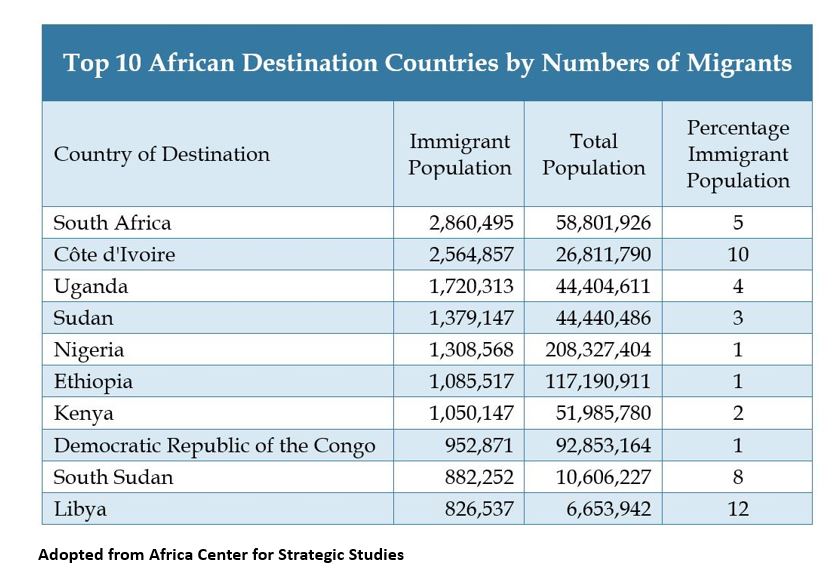
Current African Migration Trends
Africa continues to experience increased migration with an estimated over 40 million African migrants on the move. However, despite its many challenges, own goals, misperceptions, and negative international press, much of the migration occurs on the continent.
In fact, a whopping 80% of the population have no intention to migrate and real terms, Africa accounts for only 14% percent of the international migrant population, compared to 41 percent from Asia and 24 percent from Europe.
Contrary to the popular perspectives, this movement remains regional with a majority of the 85% comprises routine cross border trade and travel, related to livelihood activities.
As the Africa Continental Free Trade Agreement (AfCFTA) and its Free Movement of People Protocol gain momentum more migration related economic activities are expected

Migration Within & From Africa
Migration within and from Africa is a complex and multifaceted phenomenon driven by a combination of economic, social, political, and environmental factors. It involves both voluntary and forced movements of people across the continent and beyond, with significant implications for the regions involved.
Rural to Urban Migration: A significant trend within Africa is the migration from rural areas to urban centers, driven by the search for employment, education, and better services. This trend has contributed to the rapid growth of African cities, although it has also led to challenges such as overcrowding and inadequate infrastructure.
Cross-Border Migration: Regional migration within Africa is common, particularly within economic communities like the Economic Community of West African States (ECOWAS) and the Southern African Development Community (SADC). Migrants often move to neighboring countries for work, trade, or safety.
As the Africa Continental Free Trade Agreement (AfCFTA) and its Free Movement of People Protocol gain momentum more migration related economic activities are expected

Migration Hubs
South Africa, Kenya, Côte d’Ivoire, and Nigeria are among the top five destination countries on the continent, revealing their position as economic migration destinations and hubs for their respective subregions.
Apart from the Côte d’Ivoire, migrants make up less than 5 % of the population in each of these top destination countries. The majority of migrants in Côte d’Ivoire are from neighboring Burkina Faso, with which it shares common history, labour migration and cultural links.

Policy Challenges
Since an estimated 15% of the migrants move without official travel documentation, majority, face high levels of vulnerability and abuse in transit or at destination countries especially on the Sahel routes into Libya
North Africans still lead the number of Africans fleeing to Europe.
Governance and economic hardship in North African countries like Tunisia, Egypt, Algeria, and Libya will likely lead to more people to look toward Europe. More than 9,000 migration deaths have been recorded and more than 25,000 are reported missing in the waters between Africa and Europe.
Hence, many countries continue to associate migration with crime and insecurity instead of viewing it in the lens of limited economic opportunities and difficulty of accessing safe and regular passage.
